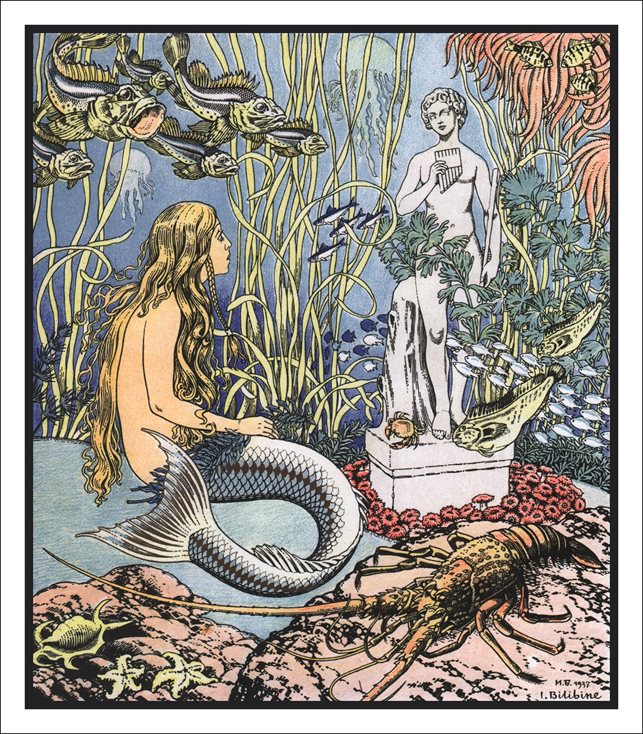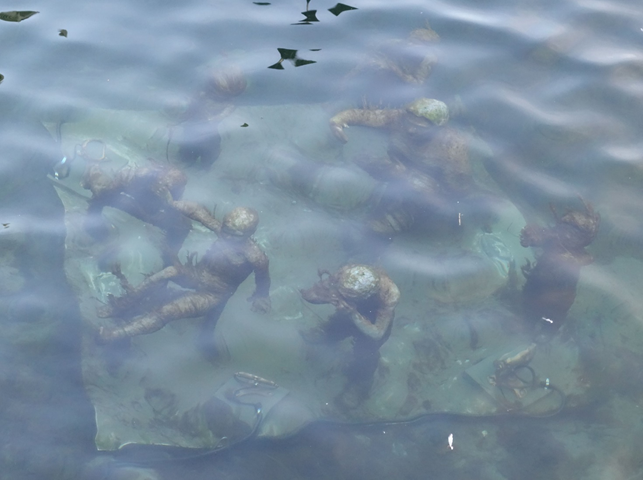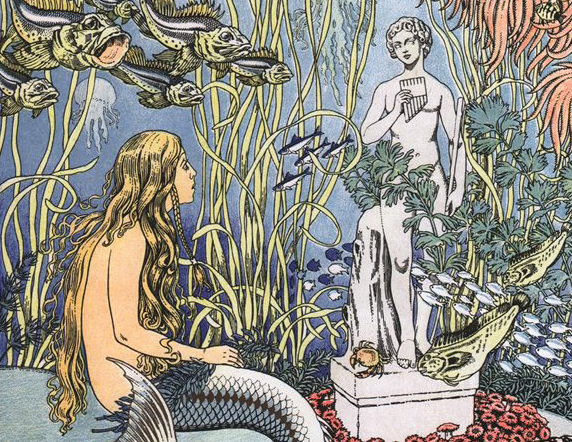Mermaids between Christianity, Animism and environmental collapse!
Rune Hjarnø Rasmussen
The point of mermaid mythology has little or nothing to do with race. It is about human relation to water spirits and thereby to the world that we live in!
I have participated myself in the sadly predictable debate on Disney’s use of a black woman to represent Hans Christian Andersen’s little Mermaid (see here). Though I stand by the points I made, it has dawned on me that this discussion actually misses a deeper point in the retelling of this particular myth. It seems deeply tragic to me that such perspectives on traditional euro-descendant knowledge get occluded because we constantly have to battle the racist mumbo jumbo, which is still threatening to clutter up our cultural heritage, in spite of the fact that for half a century race has been irrevocably refuted as a scientifically legitimate model for understanding humanity.
These discussions sometimes focus on the way in which Disney’s story popularizes Andersen and smoothens up the story for acontemporary consumption, for instance by adding a happy ending. In this we tend to forget that Andersen’s story was itself a smoothening up of older myths, making them significantly softer and easier to digest for the 19th century Victorian bourgeois class that was Andersen’s audience.

Ivan Bilibin. Русалочка. P.D.
Andersen recasts one of the main myths of animist relation in Northern Europe with a very distinctly Christian perspective, and I think we need to question and criticize what the Christianized character of Andersen's version does to this myth of an animist marriage. It is a myth that tells of the problematic bond of love between humans and other-than-humans, be that spirits, elves. animals etc. It is a myth that we very much need in our age (See this and this) - I will get back to why that is.
I just reread Andersen’s story and there is actually a remarkable precision to his understanding of other-than-human subjectivity, but something vital and problematic happens when the Christian lens is applied. Andersen’s story doesn’t end in Hollywood kissing and “happily ever after”. In fact the human prince dumps his spirit bride in favour of a human woman, who he falls deeply in love with and marries. This rupture of relation between the mermaid and the human causes the mermaid to transform into some sort of air spirit. We are told that a mermaid only has a soul (i.e. she only exists) as the result of the love of a human, a very precise formulation of new animist perspectives on other-than-humans as relations. Andersen then continues with a logic that may be widespread in human culture, but does seem akin to ideas from Spiritism that were prevalent in Andersen’s time. Those air spirits can ascend and approach God through doing good deeds to humans. The story thus ends on a bittersweet note as one of the other air spirits informs the mermaid of her new condition:
“After three hundred years, thus shall we float into the kingdom of heaven,” said she. “And we may even get there sooner,” whispered one of her companions. “Unseen we can enter the houses of men, where there are children, and for every day on which we find a good child, who is the joy of his parents and deserves their love, our time of probation is shortened. The child does not know, when we fly through the room, that we smile with joy at his good conduct, for we can count one year less of our three hundred years. But when we see a naughty or a wicked child, we shed tears of sorrow, and for every tear a day is added to our time of trial!” (http://hca.gilead.org.il/li_merma.html)
In Andersen’s story the purpose is Christian salvation which is achieved through this almost eternal self-sacrifice of the mermaid in obedient compliance with another Christian notion, i.e. that spirits and humans aren’t really supposed to mingle. In alignment with the Christian chasm between God and man, the rupture between the mermaid and the human prince seems an inevitable order of things. The mermaid is now destined for a higher ideal, floating up into the kingdom of God as a direct consequence of the petite bourgeois morality of human children. It seems almost implied that this “behaving well” partly refers to this modern child not relating to the observing spirit in the room. This well behaved non-relating of course supports the departure of the spirit from the human community, leaving it to it’s own modern self-destruction.
https://giphy.com/embed/l2QDRzA1k66mR9UKQ
If you compare this to more original myths of the marriage between humans and spirits, then the image is very different – very different indeed! These myths sometimes talk about fixing a broken or problematic relation. This is the case in fairy tales such as: “King Lindworm” and “Whitebear King Valemon”. These stories actively recreate and consolidate the animist marriage. The Swedish scholar Olle Möllervärn has even pointed out to me a quite amazing recent case of Nordic animism, where the marriage to the bear has been ritually dramatized in human marriages where the groom would be masked as a bear and ritually hunted.
However the mermaid myth also has particular correspondences in Nordic animist tradition and these myths certainly would not be found in the “feel good” category if they were classified by Netflix. One example is the medieval Scandinavian ballad about the marriage between the woman Agnete and the Merman. In this story the submission to the Christian cosmology of non-contact is also the theme, but here it causes cosmic and individual cataclysm (listen to the ballad here).
The fact that the human woman Agnete bows to the pastor as he mentions God, is the cause of a collapse that calls darkness over the land and renders the relation destructive. The spirit lover desperately begs the human woman to restore relation and return to the covenant that binds humans into the world, but she refuses and catastrophe ensues as the spirits turn against the whole human community. Here is the text in a cursory translation:
The Merman stepped in from the church door.
And all the icons turned themselves away.
His hair was like the purest gold
His eyes were filled with tears.
Agnete Agnete, come with me to the sea.
Your small children long for you!
Well let them be longing as much as they want
I will never return to them.
Think on the big ones and think of the small.
And most on the smallest? one who lies in the crib!
Now I will never think of the big and the small,
And least of the smallest one who lies in the crib
The Merman raised up his right hand.
Dusk and Darkness over all the land.
Dusky and Dark clouds came,
and covered so widely the land and villages.
Agnete is now ruptured from her marriage with the spirit and as the water spirit takes her anyway she is driven into madness which leaves her in some sort of existential limbo. Such is the consequence of bowing to the priest in the Church and breaking the lifegiving relation between spirits and humans.
We live at the eve of a civilizational collapse caused by such a rupture between humans and the world, not least our relation to water. So why don't we all - including Disney - listen to the original story about the consequences of breaking relation to the water spirits.
Observe how the powerful, beautiful and extremely relevant point of this traditional knowledge is completely eclipsed by irrelevant identitarianism and infantile white anxiety. Let us instead pay attention to the actual cultural knowledge in traditional stories, then it becomes abundantly clear that the message is maintaining a reality where water is our relative, in which water is life!

Appropriately located outside the Danish parliament is the underwater statue of the merman and his children grieving for the human who turned herself away from them. "Agnete and the Merman -Suste Bonnén CC BY 3.0"

